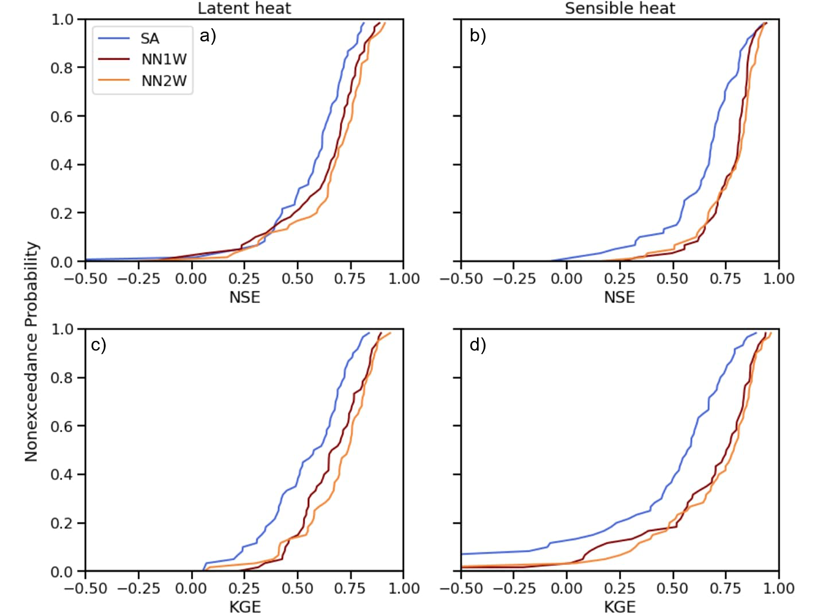Source: Water Resources Research
The past few years has seen a surge of papers applying machine learning and deep learning, a particular form of neural networks, to predicting hydrological variables. Although, predictions by deep learning methods are often more accurate than physically based models, they are usually restricted to single components of the hydrological cycle. Bennett and Nijssen [2021] use a component-based hydrological modeling framework to replace a physically based parameterization of turbulent heat fluxes with trained deep learning representations. Evaluation with observations shows that when more information is allowed to exchange between the physically based models and the deep learning methods, predictions are increasingly accurate.
Citation: Bennett, A., & Nijssen, B. [2021]. Deep learned process parameterizations provide better representations of turbulent heat fluxes in hydrologic models. Water Resources Research, 57, e2020WR029328. https://doi.org/10.1029/2020WR029328
—Marc F. P. Bierkens, Editor, Water Resources Research
Text © 2021. The authors. CC BY-NC-ND 3.0
Except where otherwise noted, images are subject to copyright. Any reuse without express permission from the copyright owner is prohibited.

